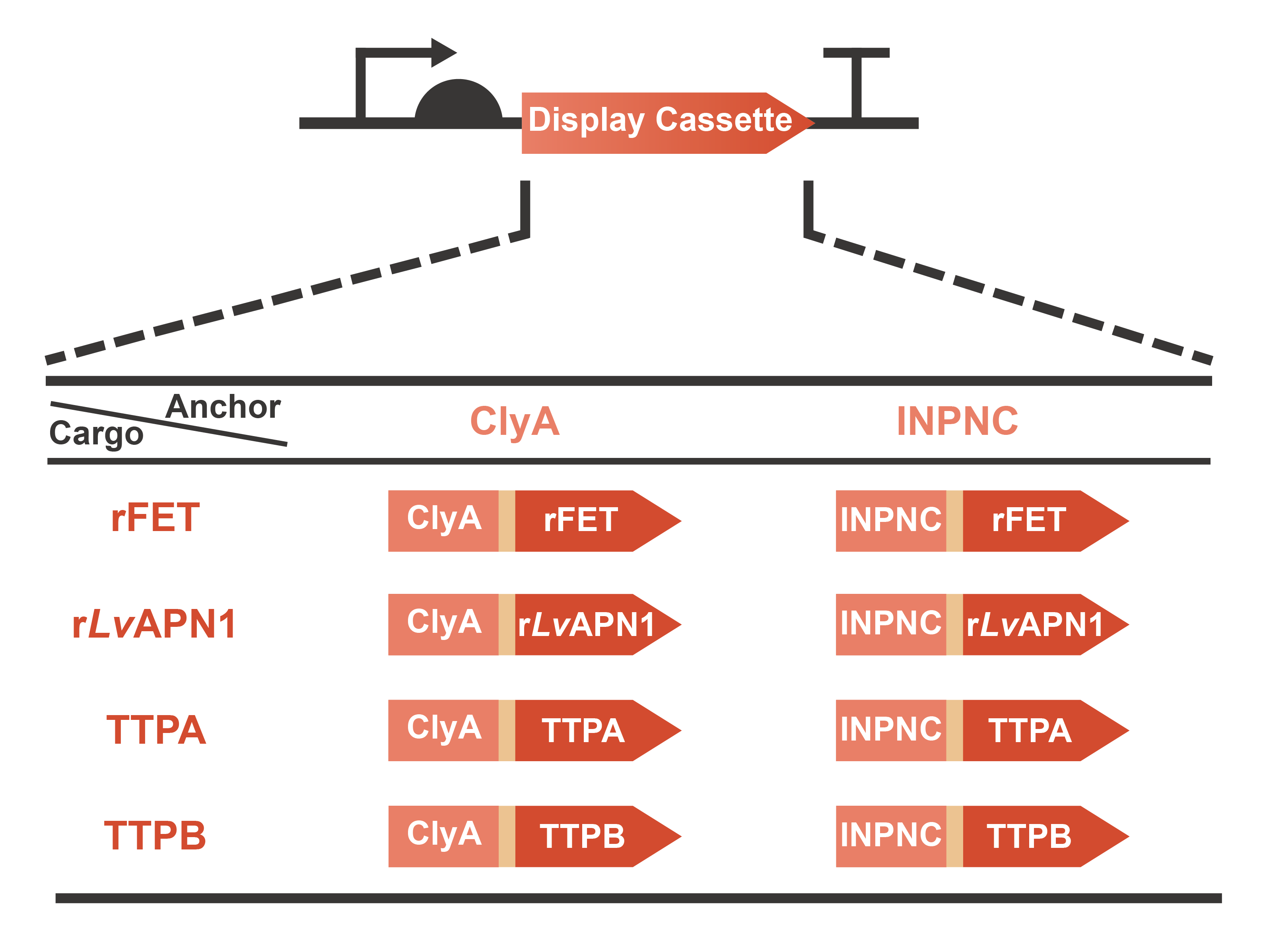Part:BBa_K4195102
I0500-B0034-INPNC-ttpB-B0015
Biology
INPNC
INPNC is a truncated form of ice nucleation protein (INP) consisting of N- and C- terminal domains (1). It is a membrane protein commonly used to displayed protein on the cell surface (2).
TTPB
TTPB is tail tubular protein B of podophage 7. It has been found that TTPB serves as ligands that recognizes the conserved Vibrio receptor Vp0980 to mediate phage adsorption. It binds with Vp0980 of Vibrio parahaemolyticus and then mediates phage adsorption and subsequent bacterial lysis(3).
Usage and design
Engineering OMVs for treating and preventing AHPND caused by the pathogen V. parahaemolyticus are a significant part of OMEGA project (Operable Magic to Efficiently Getting over AHPND). Based on the efforts of our previous projects in 2020 (AnTea-Glyphosate) and 2021 (SALVAGE), we further developed the surface display system on the OMVs released by the engineered bacteria. The usage of cargo proteins were no more limited to enzymes that are usually utilized to catalyze series bio-chemical reactions, since some receptors or ligands involved in complex protein-protein interaction (PPI) were selected as the cargo candidates. This year, we chose two classic anchor proteins, ClyA and INPNC, to construct the display cassette with various cargo proteins including rFET (receptor), rLvAPN1 (receptor), TTPA (ligand) and TTPB (ligand) (Fig. 1). On one hand, with the receptors displayed, OMVs will gain the function of neutralizing toxins secreted by V. parahaemolyticus. On the other hand, with the assistance of ligands displayed on the surface, OMVs will become a special vector to deliver antimicrobials for the specific pathogen. In summary, we have taken a step closer to the collections of extracellular functional elements (EFE), combining the OMVs, secretion systems and surface display systems which we have been dedicated to since 2020. Learn more information from our Design page.
Fig. 1 Graphic description of the expression gene circuits for display cassette designed in OMEGA project.
TTPB was fused to the C-terminal of INPNC to surface display for targeting V. parahaemolyticus. Arabinose-inducible system was used in the expression circuit of this part in pSB1C3 then constructed this part. We transformed the constructed plasmid into E. coli BL21(DE3) for further verification of its expression and function on the surface of E. coli and OMVs, including the interaction between TTPB and Vp0980.
Characterization
1. Identification
When constructing this circuit, colony PCR and gene sequencing were used to verify that the transformatants were correct. Target bands (4688 bp) can be observed at the position around 5000 bp (Fig. 2).
Fig. 2 DNA gel electrophoresis of the colony PCR products of BBa_K4195102_pSB1C3.
Refrence
1. E. van Bloois, R. T. Winter, H. Kolmar, M. W. Fraaije, Decorating microbes: surface display of proteins on Escherichia coli. Trends. Biotechnol. 29, 79-86 (2011).
2. http://2016.igem.org/Team:TJUSLS_China.
3. M. Hu, H. Zhang, D. Gu, Y. Ma, X. Zhou, Identification of a novel bacterial receptor that binds tail tubular proteins and mediates phage infection of Vibrio parahaemolyticus. Emerg. Microbes. Infect. 9, 855-867 (2020).
| None |


